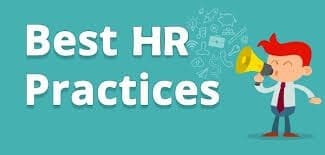As an owner/ MD of the company you could be thinking why you need good HR systems and processes for your company. A well-functioning HR system is aligned to the business strategy and goals and acts as a competitive advantage for your organization and results in improving both the ‘Top’ and ‘Bottom’ line of business.
To answer your question “why?” take the test of checking some signs that existing HR systems and processes need an overhaul
- Inability to recruit and select the required team members .
- The person whom you selected thinking he or she is a great performer is unable to meet the requirements for the role for which he/she was hired .
- High attrition amongst the high performing employees of the company.
- Issues with on time delivery and quality of product and services provided to customers leading to low customer satisfaction.
- Team members not performing to the standard expected of them.
- As an owner or MD you need to get involved in things which the team member should be able to do.
- Multiple issues come up in the workplace amongst employees which often need your intervention to resolve.
- Employee satisfaction and motivation is consistently low.
- If things go wrong , blame games start with no one taking ownership of getting the issue resolved.
A typical HR system would include the following processes:
- A process which covers Recruitment, selection and onboarding.
- Policy framework which clearly defines expectations the organization has from the employee and what the employee will get from the organization while at the same time aligning with compliance requirements and statutory requirements.
- An objective Performance Management Process (PMP) which helps in clearly identifying your high performers, the steady contributors and the not so great performers.
- A well-defined Compensation, Benefits and Incentive framework.
- Training and Development to ensure constant upgradation and skill building of the employees.
- Employee engagement framework to keep the employees motivated and willing to do more for the organization with a linked reward and recognition process.
- Talent management and succession management framework.
- To build the desired organization culture or as it is commonly understood, the way things are done in a company or shared beliefs of the employees.
It does not matter if you are running a small or a multinational organization; Good HR practices help any business or company achieve its business goals. If appropriately done, HR management can prove to be a pivotal step for building a great workplace, and it benefits not only the company but also the people who are working there by creating conditions for a healthy and productive.
Let us understand the 8 key aspects of HR systems and processes in a little more detail:
Recruitment, Selection and Onboarding: Your company’s success depends to a large extent on the quality of people who are there in your company. Bringing the right kind of people on board is a very tough job without having the right process of attracting from the desired talent pool. The first thing which you must do is to understand what are the skills, knowledge and experience which are required to perform a specific role in an effective manner . This is normally done with the help of a job description. Once this is done you need to decide how you will assess that the prospective candidate has these skills and knowledge, What methods will you use to check for a specific skill , and if they are able to use these skills in a role related situation. This is normally done through a formal selection process which specifies the methods which will be used to assess these skills. Once the team member has been selected it is imperative that the first impressions of the organization are positive in the selected team member’s mind. This is done through a clearly defined onboarding process which makes contact with the team member even before he/she has joined till about 90 days post joining. This onboarding process ensures a positive experience for the team member post selection on every touchpoint that he/she has with the organization.
Policy framework: A good policy framework is the first step in ensuring a structured process which clearly defines the expectations the organization has from the team member and what the team member would get in return. Policies normally cover aspects like work timings, leaves of various types, benefits provided by the company and compliance issues. A good policy framework encourages a consistent way of doing things in the company. In the absence of a policy framework, discretionary decisions are made which bring about a perception amongst the employees that there is bias in the way the organization treats different people.
Performance Management Process: Most of us want to be recognised and rewarded for the work that we do, however, before the reward can take place it is important that performance should be measured objectively. The employees must feel that the process of measuring the work which they put in is fair and everyone is being measured by similar parameters. A good performance measurement process with periodic reviews and feedback help the employee understand what he/she is doing well and which are the areas which s/he needs to improve to meet the performance expectations for his/her role. The performance management process needs to have a clear link to compensation and rewards as without this link, people would get demotivated and do just enough to protect their jobs.
Compensation, Benefits and Incentives: For every owner/MD, the one question which always perplexing them is “Am I paying more/less to my employees?”. A well-designed compensation, benefits and incentive framework answers this question to a large extent. It builds in a correlation between qualification, skills and knowledge and compensation and also compares it with compensation for similar roles in similar industry. In addition, best in class benefits like health insurance etc. which add to employee retention without a commensurate cost are also suggested/implemented.
Training and Development: A well designed training and development framework adds as a competitive advantage by upskilling employees and building capability in the organization. Training could be planned as a result of developmental needs which flow as an outcome of the performance management process or could be to ensure that t the team is able to meet new challenges which are thrown up due to the business and competitive environment. Understanding what each your employee or group of employees needs as part of training and then ensuring that this training is provided to them helps in building this competitive advantage.
Employee Engagement: Happy people make a more productive workspace. No one would like to work in a tense and boring environment. The workplace is like a second home to many people and they spend most of their time at their workplace which is sometimes even more than what they spend in their own homes. Therefore, workplace relationships amongst team members, peers, seniors and interdepartmental become the key to a happy workplace. This can be facilitated by ensuring constant channels of communication between the employees and the management and having a good understanding of what employees want by a process of conversations designed to capture the employee’s aspirations and how they feel about various workplace issues.
Talent management and succession management framework: Leaders who take ownership and accountability and demonstrate entrepreneurship qualities are assets which every organization would like to have. A process of selecting these high potentials and building the desired competencies in them is the key to building an organization which will succeed in achieving its present and future goals. In addition, having a backup designated for most of the critical roles provides peace of mind to the owner/MD that in case of loss of any role holder due to unforeseen circumstances, the company would still be able to perform at the highest level.
Organizational Culture: Organizational culture is the collection of values, working rules, company vision, traditions and beliefs that a company has adopted over the years. A well-organized HR framework plays a vital part in influencing the organizational culture within an organization. Establishing guidelines, procedures and company standards lets employees know and learn the behaviors that are acceptable in the workplace. Organizational culture has an important role to play in the way people do their work and cooperate with one another and with customers.

Mr. Rajiv

